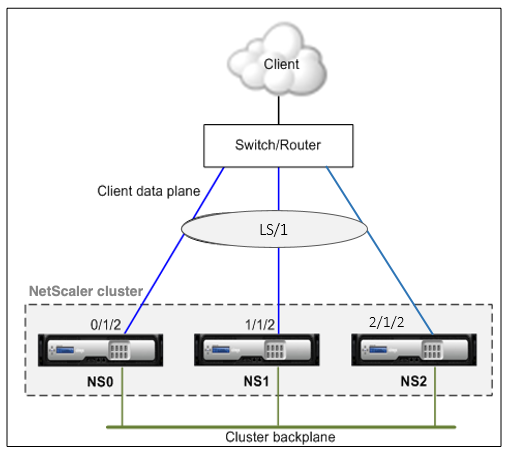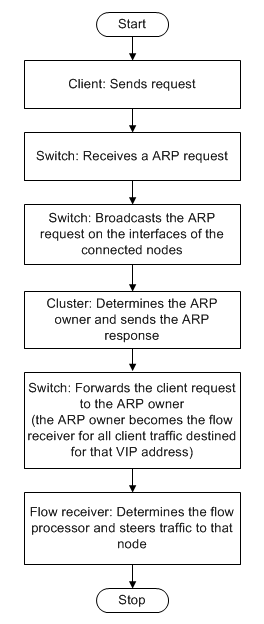-
Distributing traffic across cluster nodes
-
Managing the NetScaler cluster
-
Configuring linksets
-
Node groups for spotted and partially striped configurations
-
Removing a node from a cluster deployed using cluster link aggregation
-
Monitoring command propagation failures in a cluster deployment
-
Monitor Static Route (MSR) support for inactive nodes in a spotted cluster configuration
-
This content has been machine translated dynamically.
Dieser Inhalt ist eine maschinelle Übersetzung, die dynamisch erstellt wurde. (Haftungsausschluss)
Cet article a été traduit automatiquement de manière dynamique. (Clause de non responsabilité)
Este artículo lo ha traducido una máquina de forma dinámica. (Aviso legal)
此内容已经过机器动态翻译。 放弃
このコンテンツは動的に機械翻訳されています。免責事項
이 콘텐츠는 동적으로 기계 번역되었습니다. 책임 부인
Este texto foi traduzido automaticamente. (Aviso legal)
Questo contenuto è stato tradotto dinamicamente con traduzione automatica.(Esclusione di responsabilità))
This article has been machine translated.
Dieser Artikel wurde maschinell übersetzt. (Haftungsausschluss)
Ce article a été traduit automatiquement. (Clause de non responsabilité)
Este artículo ha sido traducido automáticamente. (Aviso legal)
この記事は機械翻訳されています.免責事項
이 기사는 기계 번역되었습니다.책임 부인
Este artigo foi traduzido automaticamente.(Aviso legal)
这篇文章已经过机器翻译.放弃
Questo articolo è stato tradotto automaticamente.(Esclusione di responsabilità))
Translation failed!
Configuring linksets
Linkset is a group of interfaces of cluster nodes that belong to the same broadcast domain. In linksets, each node has the information about which interfaces of other nodes are connected to the same broadcast domain.
Note
Linksets are a mandatory configuration in the following scenarios:
- For deployments that require MAC-Based Forwarding (MBF).
- For “-m MAC” mode that is enabled at the virtual server along with MBF mode enabled globally.
- To improve the manageability of ACL and L2 policies involving interfaces. You define a linkset of the interfaces and add ACL and L2 policies based on linksets.
In a cluster setup, the following features use MBF internally.
- Forwarding session
- L2Conn
- MAC mode virtual server
- Transparent monitor
- LLB
Linksets must be configured only through the cluster IP address.
Consider an example with a three node cluster. In the following figure, the interfaces 0/1/2, 1/1/2, and 2/1/2 are in the same broadcast domain and therefore can be configured as linkset (LS/1).
Figure 1. Linksets topology

Figure 2. Traffic distribution flow using linksets

To configure a linkset by using the CLI
-
Log on to the cluster IP address.
-
Create a linkset.
```add linkset
**Example** ```add linkset LS/1<!--NeedCopy--> -
Bind the required interfaces to the linkset. Make sure the interfaces are not used for the cluster backplane.
```bind linkset
-ifnum ... **Example** ```bind linkset LS/1 -ifnum 0/1/2 1/1/2 2/1/2<!--NeedCopy--> -
Verify the linkset configurations.
```show linkset
**Example** ```show linkset LS/1<!--NeedCopy-->Note
You can bind the linkset to a VLAN by using the
bind vlancommand. The interfaces of the linkset are automatically bound to the VLAN.
To configure a linkset by using the GUI
- Log on to the cluster IP address.
- Navigate to System > Network > Linksets.
- In the details pane, click Add.
- In the Create Linkset dialog box:
- Specify the name of the linkset by setting the Linkset parameter.
- Specify the Interfaces to be added to the linkset and click Add. Repeat this step for each interface you want to add to the linkset.
- Click Create, and then click Close.
Share
Share
This Preview product documentation is Cloud Software Group Confidential.
You agree to hold this documentation confidential pursuant to the terms of your Cloud Software Group Beta/Tech Preview Agreement.
The development, release and timing of any features or functionality described in the Preview documentation remains at our sole discretion and are subject to change without notice or consultation.
The documentation is for informational purposes only and is not a commitment, promise or legal obligation to deliver any material, code or functionality and should not be relied upon in making Cloud Software Group product purchase decisions.
If you do not agree, select I DO NOT AGREE to exit.